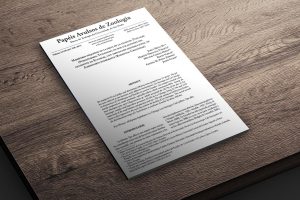| Descripción |
We describe a newextinct spiny rat, Proclinodontomys dondasi n. gen. n. sp. (Rodentia, Caviomorpha, Echimyidae), represented by a noteworthy preserved skull and mandible from the early-middle Pleistocene outcrops at the coastal cliffs of SE Buenos Aires Province (Central Argentina). Phylogenetic analyses allow us to propose that the new species described here and the already known Eurzygomatomys mordax (Winge) represent a new genus closely related to the living Euryzygomatomys spinosus and Clyomys laticeps. The new genus differs from Euryzygomatomys and Clyomys by havingmuch more procumbent upper incisors, a more developed fossa for the M. temporalis, more flared and laterally expanded zygomatic arches, frontal less markedly expanded posteriorly, jugals much deeper anteriorly than posteriorly, with the dorsal border descending more abruptly posteriorly, smaller orbital cavity, and external auditory meatus relatively smaller and slanted upward and backward. Several features of the new species reflect a higher degree of adaptation to semifossorial habits than those of E. spinosus. The origin of the semifossorial ecomorphotype within echimyids may have been triggered by the expansion of relatively open and arid environments that arose near the Miocene-Pliocene boundary. The record of this new echimyid in Central Argentina indicates that during the early-middle Pleistocene, the southern limit of the geographic range of extinct representatives of the Brazilian lineage of semifossorial echimyids extended farther south than that of their living members. |



